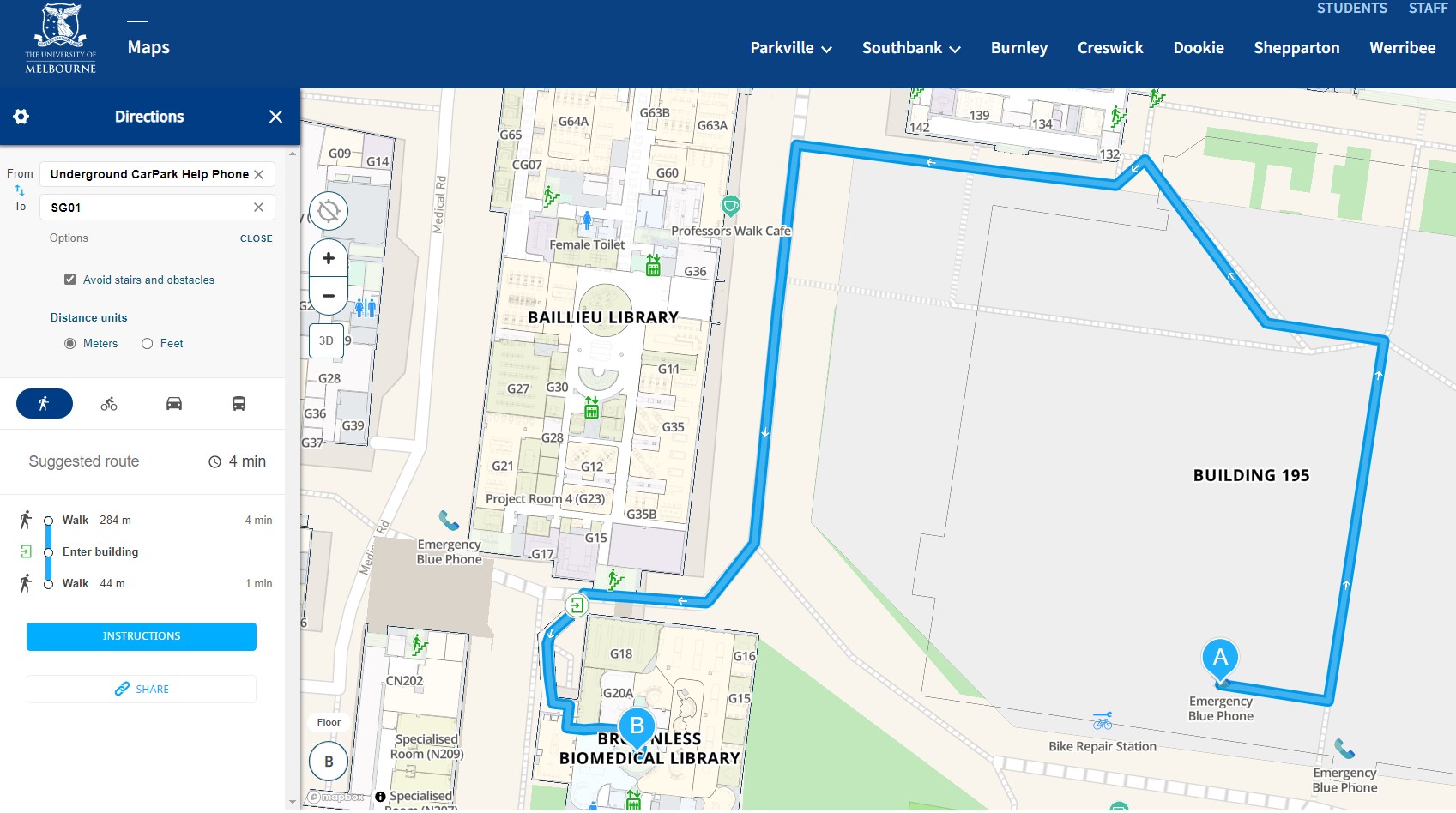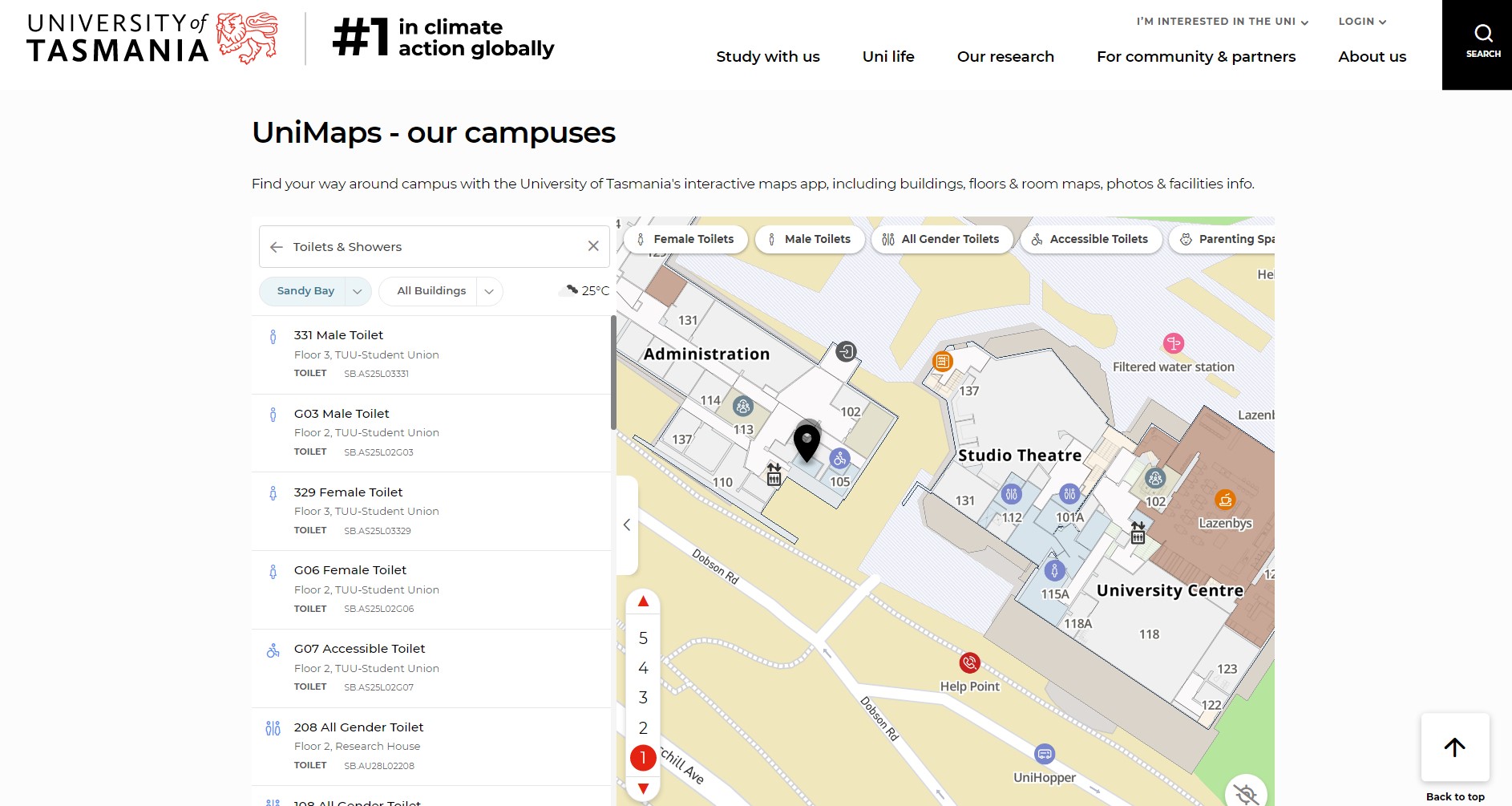MazeMap - wayfinding to maximise accessibility
Have you ever been completely lost on campus? Whether you are a staff member or student sometimes education campuses can be disorienting and often not accessible. Even if you have been on campus for a long-time facilities and spaces are changing constantly. And forget about trying to give accurate directions to others!
A technology company called MazeMap out of Norway (with offices in the USA and Australia) is now a global provider of digital wayfinding solutions for both indoor and outdoor settings on campuses such as education, healthcare, hotels and event venues. What's more they aim to improve the user experience for people with disability navigating these spaces.
In September 2022, MazeMap held an online conference which featuring recent adopters the University of Sydney and the University of Tasmania. These universities shared their experiences of implementing wayfinding technology and infrastructure management through collaborations with MazeMap to improve student, staff and visitor experiences navigating and utilising campuses.
For ADCET, the obvious advantage to this and other wayfinding technologies is the focus accessibility for people with disability. So, we thought we would find out more about MazeMap and the implementation journey of these universities.
Navigating large spaces presents a challenge for people with disabilities or visual impairments. At MazeMap, we’ve adapted our platform to be inclusive of all our users. We aim to help organizations provide accessible navigation solutions for anyone who has a visual impairment or who has difficulty using stairs.
MazeMap aims to solve a number of key issues for educational institutions:
- improving the student, staff and visitor experience with improved wayfinding technology including accessibility for people with disability
- improving wayfinding and room utilisation for staff including reducing latecomers or ‘no shows’ at meetings and better utilising and monitoring of space through integration with timetabling systems
- managing facilities more efficiently and sustainably through energy monitoring, booking management, heat map technology to monitor usage and keeping signage, facilities and maps up to date
- reducing costs associated with physical helpdesks, signage costs and poor room utilisation.
And all of this is at your fingertips through your mobile device, PC or tablet.
So far over 25 universities across the world have adopted this technology and here are the experiences of two recent adopters.
The University of Melbourne
Jade Germantis, Program Director Digital Estate at the University of Melbourne presented the University’s journey with MazeMap. As part of their digital transformation journey starting in 2019 the University of Melbourne’s Smart Campus team developed a campus digital twin known as CampusNow integrating with the Mazemap platform across 682 floor plans and their seven campuses.
QR codes were added on physical campus map boards to enhance the wayfinding experience and user activity was recorded with google analytics.

With their CampusNow platform the University integrated with MazeMap to visualise its spatial floor plans for asset and facilities management and master planning. The MazeMap system connects to Archibus (space and asset management system) and assists the university with all elements of facilities management from room booking management, access card monitoring, energy invoicing, pest management, and lighting system management.
Spatial data verification and maintenance activities are always ongoing to make sure that all wayfinding and asset management data is up to date. This is enhanced by support via internship students from the Master of Engineering and IT programs.
We are ever expanding our searchable MazeMap wayfinding points of interest through continually seeking valuable feedback from our students and staff.
Jade Germantis, Program Director Digital Estate, Campus Management. The University of Melbourne.
The University of Tasmania
The University of Tasmania (UTAS) MazeMap project – called UniMaps and UniNavigator commenced in early 2021. The project started with a series of student led workshops the focus group set out to define the problem to solve and how to solve it. The [GO2] focus groups were adamant they did not want another app, instead insisting that maps be accessible on a range of devices, mobile, PC or tablet in a web-based platform.
MazeMap took UTAS CAD drawings from Archibus and other platforms and files containing information on their facilities and created UniMaps which is a scalable web-based app that includes wayfinding information for both inside and outside facilities at UTAS’ eight campus locations.
Our primary vision was to deliver an easy, safe, accessible, and integrated navigation experience that reduces the stress and anxiety that our people feel when finding their way around our campuses. By working with our students, accessibility staff, and other partners; have improved our campus experience for our community.
Nathan Tenaglia AD, Infrastructure and Operations – IT Services
Additional information includes individual facility information, points of interest, accessible pathways that eliminate routes with stairs or other obstacles and includes multiple pictures of venues to mazimise location.
UniMaps also links directly from the student’s timetable provide opening and closing times for information, recycling stations, digital signage and health and safety information such as first aid.
Additional products introduced by UTAS includes UniNavigator displays located at the main entrances of our new buildings and can be used to find just about anything on campus, including meeting spaces, toilets, cafes, and more.

MazeMap’s new features
Robert Cox, MazeMap’s General Manager for Asia, Pacific and Japan highlighted new features MazeMap has released including hiding asset locations that are not for students or the public; 3D map capability; room booking systems connected to Office365, Google Calendar or Webex room booking platforms; and transport timetable integration.
Apart from University of Sydney and University of Tasmania a number of other universities have recently implemented MazeMap technology such as the University of Newcastle, Bond University, University of Western Australia and more recently University of NSW and the University of Queensland.
Robert’s experience working in universities means he understands the challenges in creating positive user experiences for students, staff and visitors alike.
“Our team is committed to delivering a product that, irrespective of individual ability, delivers all users a positive experience”. He said.
Mazemap can be easily implemented with MazeMap technology doing the heavy lifting through a website, app, integration with existing university systems and customisation to work with education providers with single or multiple locations.
Robert says that university campuses are evolving places with constant changes that need to be managed and supported in a proactive and dynamic way. Activities such as changing student timetables, decanting spaces, capital works, safety audits and post-COVID usage are some of issues space and facility managers deal with.
MazeMap uses AI processing tools to deliver maps which education providers can overlay with a wide range of information including accessible pathways and facilities, classroom specifications, opening times for cafes and facilities, pop-up events, construction zones and changes to class timetables.
If a classroom were suddenly unavailable to students, then MazeMap can notify the students and provide an alternative room and accessible pathway reducing the disruption for students. Wayfinding is a key issue that impacts student satisfaction so we can embed this technology into timetabling processes and improve the student experience.
Robert Cox, General Manager for Asia, Pacific and Japan, MazeMap
Each university noted the greatest change was the ensuring that the data from Archibus and other more manual records of facilities were up-to-date and accurate. This included cross-checking other data systems and records which had additional information about each facility, room, building, floor plan – sometimes this was a digital activity and sometimes required physically visiting locations.
Exploring greater accessibility
ADCET is a great advocate of ICT which incorporates accessibility for students with disability as it equally benefits the whole education community. Digital transformation across our tertiary education providers in a key priority as educational institutions look to provide more welcoming and accessible physical and virtual spaces to meet the emerging needs of users.
ADCET encourages all tertiary education providers to prioritise accessibility as part of their digital transformation. In the future ADCET hopes to feature a webinar with MazeMap to showcase this technology for education providers to consider as a possible option for accessible wayfinding.
March 2023
Author
Gabrielle O'Brien

